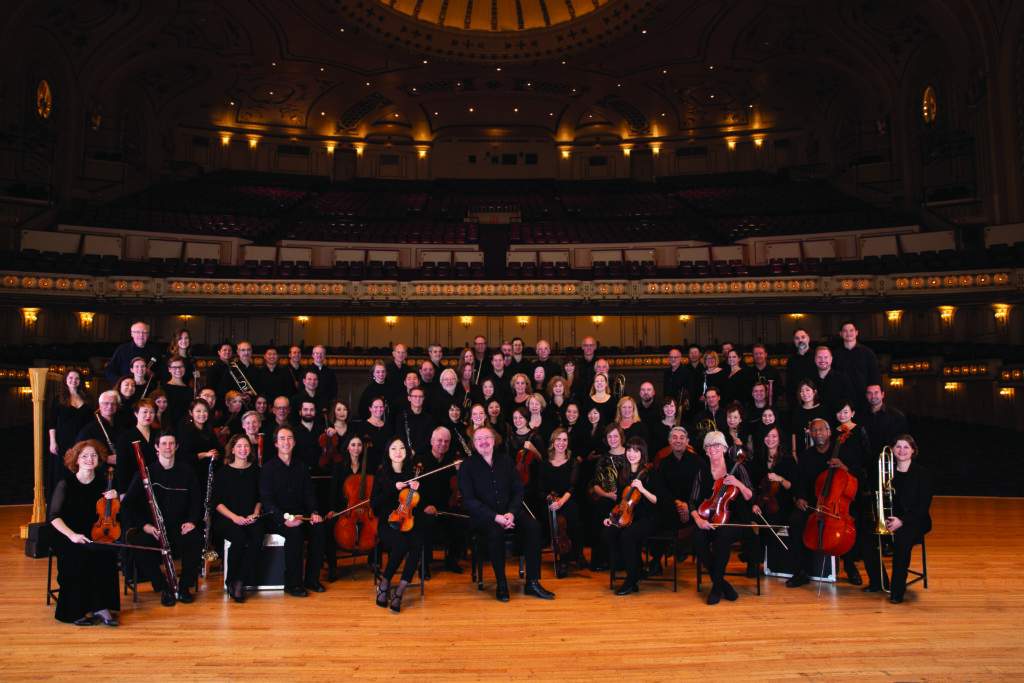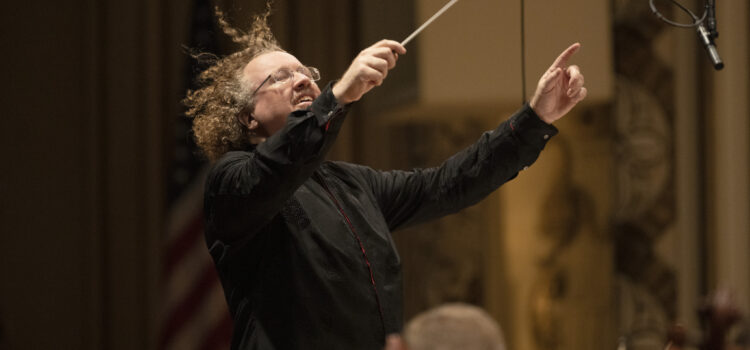By CB Adams
Upon first reviewing the selections for the St. Louis Symphony Orchestra’s second performance of the 2022-23 season, it might have seemed like a concert designed by Debbie Downer.
Two of the pieces, Tōru Takemitsu’s “Night Signal” and Qigang Chen’s “L’Éloignement” (The Distancing), are neither well-known nor necessarily upbeat sounding based on their titles. And the better known Mahler work, “Das Lied von der Erde” (“The Song of the Earth”), is an hour-long cycle of six song movements that explore themes and variations on the shuffling off of this mortal coil, i.e., life and death.
But not all first thoughts are best thoughts.
Stéphane Denève, Music Director, and Erik Finley, development partner and the SLSO’s Vice President and General Manager, chose a more sophisticated and ultimately uplifting curation of pieces chosen to be experienced in person in a concert hall. This concert was designed to be both self-contained and part of the overall arc of the entire season – to experience through music the interconnectedness of the world.
To use a twenty-five-cent word: it was polyphony. To quote the Sherman Brothers’ Disneyland boat ride ditty, “It’s a small world after all.” Either way, Denève and SLSO delivered an exquisite performance from first note to last.
The performance began with the brass section standing in a line behind the strings. This arrangement provided a potent visual clue that Takemitsu’s “Night Signal” was about to emit something out of the ordinary. According to The Guardian, “Takemitsu’s understated and crystalline compositions combine elements of his own Japanese traditions with the western modernism he loved so much.” That modernism included American jazz, elements of which are woven into “Night Signal” like “tsuzure-nishiki,” the Japanese term for polychrome tapestry.
“Night Signal” was unusual in another way. At the three-minute mark, a time when listeners are just getting settled into a piece, it was over. It was brief only in duration. It made a complete, minimalist statement unto itself while serving as a fanfare for the pieces that followed. Roger Kaza, principal horn, and the entire horn section rendered the score with a nimbleness and restraint.
The orchestra then settled into place for Qigang Chen’s “L’Éloignement.” Chen is a Chinese-born French composer whose credits include symphonies, chamber pieces, film scores and songs, including “You and Me,” the theme song for the opening ceremony of the Beijing Olympics (he also served as music director). Moving from “Night Signal” to the string-only “L’Éloignement” was a logically smooth transition into the latter’s bustling, cinematic phrases woven with a touching Chinese folk love song.
“Night Signal” and “L’Éloignement” were clearly selected and sequenced because they share a delicate aesthetic melding for western and eastern influences. These influences were pleasing and expanding in the effects. The pieces were expert choices to demonstrate polyphony at its most subtle and worldliness. And Danny Lee, principal cellist, and Beth Guterman, principal violist, proved in their performances why they deserved to sit at the head of their sections.
Many who attended the Sept. 22 or 23 performances probably came for “Das Lied von der Erde,” described by Leonard Bernstein as Mahler’s “greatest symphony.” Such a listy designation may be debatable, but “The Song of the Earth” is almost universally considered Mahler’s most autobiographical work.
It’s a symphonic cycle of six songs for alto and tenor voices and orchestra. Kelley O’Connor, mezzo-soprano, and Clay Hilley (making his SLSO debut), tenor, were the soloists for these performances.
So, what’s this piece got to do with the intermingling of western and eastern musical influences? The answer is not really sonically. It’s somewhat part academic and definitely part Six Degrees of Kevin Bacon. The source material is a bit removed as it was inspired by an anthology of Chinese poems translated into German. This text was further translated into English and projected during the performance. The result was often more Germanic sturm und drang (and drinking), especially during Hilley’s songs.
“’Das Lied von der Erde’” is about loss, grief, memory, disintegration, and, ultimately, transfiguration,” according to Robert Greenberg, a noted historian, composer, pianist and author. And it’s those themes that make a compelling case for including it with the preceding compositions rather than Mahler’s masterful use of eastern pentatonic scales.
Mahler’s “song symphony” is essentially a two-part symphony with six songs that explore the phases of life (songs 1-5) and the transition to death (song 6). O’Connor and Hilley were splendid and powerful in distinctively different ways. They were definitely a study in contrast, with Hilley storming through his songs with operatic passion while O’Connor presented her lyrics with refined, gossamer restraint. This binary approach aligned with – mirrored – the song symphony’s themes of life and death, light and dark, conflict and acceptance.
And it’s that last word – acceptance – that ended the performance so satisfyingly. As O’Connor sang “Der Abschield” (“The Farewell”), her voice led toward the ending that Mahler intended: acceptance of death as well as acceptance of the pairing of these compositions into a cohesive experience.


CB Adams is an award-winning fiction writer and photographer based in the Greater St. Louis area. A former music/arts editor and feature writer for the St. Louis Globe-Democrat, his non-fiction has been published in local, regional and national publications. His literary short stories have been published in more than a dozen literary journals and his fine art photography has been exhibited in more than 40 galley shows nationwide. Adams is the recipient of the Missouri Arts Council’s highest writing awards: the Writers’ Biennial and Missouri Writing!. The Riverfront Times named him, “St. Louis’ Most Under-Appreciated Writer” in 1996.

